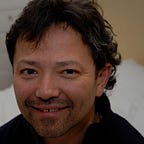Deleuze and Fragmentation 2
Perspectivism and the 20th Century: Modernism
Modernism started out as a desire to create new forms of art and social organization driven in part by urbanization and the industrial revolution.
Modernists, heavily influenced by Nietzsche’s will to power and his plea for mankind to embrace new perspectives, and Bergson’s duration, intuition and elan vital, embraced creativity as the core force moving society forward.
They explored the inner workings of human experience, new ways of seeing the world, and new ways of understanding the conversations we have with ourselves in attempting to interpret those new visions.
Creative Reality
Modernism had its origins in an intensely optimistic outlook, a new sense of empowerment and freedom that put its full confidence in humanity’s ability to deliver new ways of seeing, feeling, sensing reality, new forms of thought, life and connections in society.
Modernists rejected an ideology of realism and embraced new perspectives on experience. They sought a wider sense of reality, both spatial and temporal; a willingness to engage with a plurality of ideas embracing the open.
They rejected the rationalism of the Enlightenment as well as the moral and social imperatives of traditional religion, and sought through art and philosophy a deeper and broader understanding of reality, beyond realism; exploring the primitive, the mythological, the collective unconscious, the psychological.
Visual Art
With its origins in German and English Romanticism and French Impressionism and Symbolism, the modernist movement charted and explored new perspectives.
The Fauves, the wild beasts, took impressionist use of color and light to the limit, abandoning representation in art. Henri Matisse’s Le Bonheur de vivre announced to the world the use of vivid color having no resemblance to our everyday experience; in a Bacchanalian scene in which nude women and men cavort, play music, and dance.
The Cubists, following Paul Cézanne, held up the cube, the sphere and the cone as the building blocks of all visual experience, and explored primitivist themes, such as Picasso’s Les Demoiselles d’Avignon; a similar scene to that of Le Bonheur de vivre, but here the women have angular and disjointed body shapes, evoking something disconcerting and savage.
Such movements in visual art departed from realist sensibility and forced us to ask what further meaning we could find through the affective use of light, color and composition.
Literature
In literature, authors sought out new forms of narration exploring the psychology of inner experience.
James Joyce and Virginia Woolf departed from traditional prose and employed stream of consciousness narration to give expression to the inner workings of thought itself, the multitude of sensations and feelings that inform every moment of our existence; the temporal quality of existence.
Joyce’s Ulysses took a single day in the life of an everyday man, and explored possible connections with the mythical, a primitive sense of ordering experience. Woolf’s To The Lighthouse expressed the sea as motif for the fluidity of our conscious and unconscious experience.
Literary prose abandoned a strict portrayal of the external and attempted to grasp at human experience in a variety of settings, from euphoric pre-war times, to the desolation and shock of post-war devastation.
A euphoric sense of the power of human creativity permeated early Modernism, a sense that human creativity could provide a new order and purpose in the world.
The Rise of Narratives
But over the course of two devastating world wars, this need for a sense of order and purpose grasped more desperately at narratives that would unify a world in disarray.
A pessimism and disillusionment crept in as society fragmented into chaos.
A stress on freedom of expression and experimentation gave way to reactionary narratives intended to unify.
I hope you enjoyed this article. Thanks for reading!
Tomas
Please join my email list here or email me at tomas@tomasbyrne.com.
Excerpt from my forthcoming book, Becoming: A Life of Pure Difference (Gilles Deleuze and the Philosophy of the New) Copyright © 2021 by Tomas Byrne. Learn more here.
